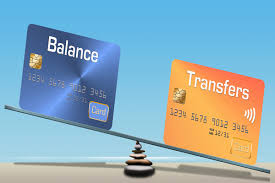Introduction
A balance transfer credit card can be a great financial tool to manage and reduce your debt. By transferring your existing credit card balance to a new card with a lower or zero-interest rate, you can save money on interest payments and pay off your debt faster. This guide will explain how balance transfer credit cards work, their benefits, drawbacks, and how to choose the right one.
What is a Balance Transfer Credit Card?
A balance transfer credit card allows you to move outstanding debt from one or more credit cards to a new card with a lower interest rate, often 0% for a promotional period. This can help reduce your overall interest burden and make debt repayment more manageable.
How Does a Balance Transfer Work?
- Apply for a New Card – Choose a balance transfer credit card with a low or 0% introductory APR.
- Request a Balance Transfer – Provide details of your existing credit card debt to the new card issuer.
- Approval and Transfer – If approved, the new card issuer pays off your old credit card debt, and the balance moves to your new card.
- Repayment Period – You must repay the transferred balance within the promotional period to avoid high-interest rates.
Benefits of a Balance Transfer Credit Card
1. Lower Interest Rates
Many balance transfer cards offer a 0% APR for an introductory period (usually 6-18 months), reducing interest costs significantly.
2. Faster Debt Repayment
With no interest to worry about, more of your payments go toward reducing the principal amount, helping you clear your debt faster.
3. Simplified Payments
If you transfer multiple balances to one card, you only need to manage a single monthly payment instead of multiple ones.
4. Credit Score Improvement
Paying off your debt faster can improve your credit score by reducing your credit utilization ratio.
Drawbacks of a Balance Transfer Credit Card
1. Balance Transfer Fees
Most credit card issuers charge a balance transfer fee, typically 3-5% of the transferred amount, which can add up.
2. High Interest After the Promotional Period
Once the introductory period ends, the interest rate may increase significantly, making it expensive if you haven’t paid off the balance.
3. Credit Score Requirements
To qualify for the best balance transfer offers, you need a good to excellent credit score.
4. Risk of Increased Debt
If you continue spending on your old card without paying off the balance transfer, you could end up with more debt.
How to Choose the Best Balance Transfer Credit Card?
1. Check the Introductory APR
Look for a card with a 0% APR for the longest possible duration.
2. Compare Balance Transfer Fees
Consider cards with the lowest transfer fees to minimize costs.
3. Look at the Regular APR
Check the interest rate after the promotional period to avoid surprises.
4. Consider Additional Benefits
Some balance transfer cards offer rewards, cashback, or other perks that may be useful.
5. Read the Terms and Conditions
Always read the fine print to understand the eligibility requirements and any hidden fees.
Steps to Successfully Use a Balance Transfer Credit Card
- Choose the Right Card – Select a card with the best terms for your situation.
- Transfer the Balance Quickly – Complete the transfer as soon as possible to maximize the interest-free period.
- Make Consistent Payments – Pay at least the minimum amount every month to avoid penalties.
- Pay Off Before the Promo Period Ends – Clear the full balance before the higher interest rate kicks in.
- Avoid New Purchases – Focus on debt repayment instead of adding more charges to your new card.
FAQs
1. Does a balance transfer hurt my credit score?
A balance transfer itself does not hurt your credit score, but applying for a new card may cause a temporary dip. However, responsible use can improve your score in the long run.
2. Can I transfer a balance to a card from the same bank?
Most issuers do not allow balance transfers between their own cards. You usually need to transfer to a card from a different bank.
3. What happens if I don’t pay off the balance before the promotional period ends?
If you don’t pay off the balance, the remaining amount will be subject to the regular APR, which can be high.
4. Are there any limits on how much I can transfer?
Yes, your credit limit on the new card determines the maximum balance you can transfer.
5. Can I use a balance transfer credit card for new purchases?
Yes, but it’s not recommended because new purchases might not qualify for the promotional APR and could accumulate interest.
Conclusion
A balance transfer credit card can be a smart financial move if used correctly. It helps you save on interest and pay off debt faster. However, it’s essential to choose the right card, be aware of the fees, and make timely payments. If managed well, a balance transfer can be a great step towards financial freedom.
